Flowers have a way of bringing out the best in people. And we’re not making that up — according to the largest study ever performed on the relationship between plants and humans, for every 10% increase in vegetation near your home, your probability of death drops by 4%. Just looking at plants is known to lower stress, and touching them might actually change the microbiome of your skin and help make your immune system stronger.
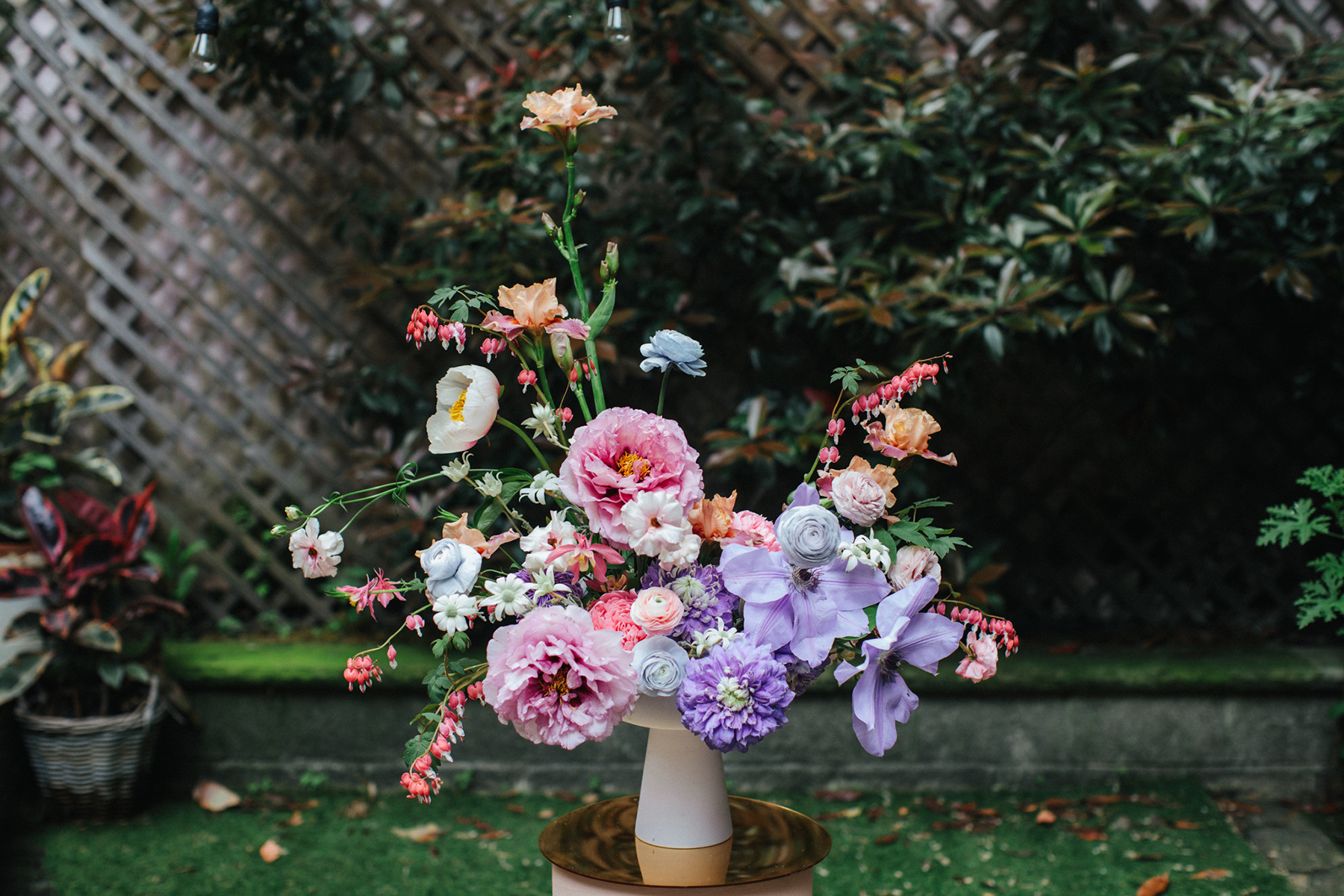
Flowers are the original spark-ers of joy, so it’s no wonder we’re obsessed with getting closer to them. This winter, Pangaia released a capsule collection of puffer jackets filled with natural wildflowers instead of down feathers. The Pratt Institute announced a fine art-inspired floral design program. Instagram makeup brand Glossier tapped landscape designer Lily Kwong to help build their Seattle pop-up shop, which juxtaposed bright white makeup counters with moss-covered hills, Mexican feather grass and locally sourced flowers.
With our interest in floral design blooming, the women of horticulture are poised to take over on social media. A floral artist herself, RANGE’s Whitney Connolly recently sat down with East Olivia founder Kelsea Olivia, the global petal pusher at brand activations for the likes of Google, H&M, Create & Cultivate, Hallmark and DVF. Here, they discuss why floral foam is bad for the planet, how to keep your team inspired, and why we should all fill our home/office/life with as many “outdorphins” as possible.
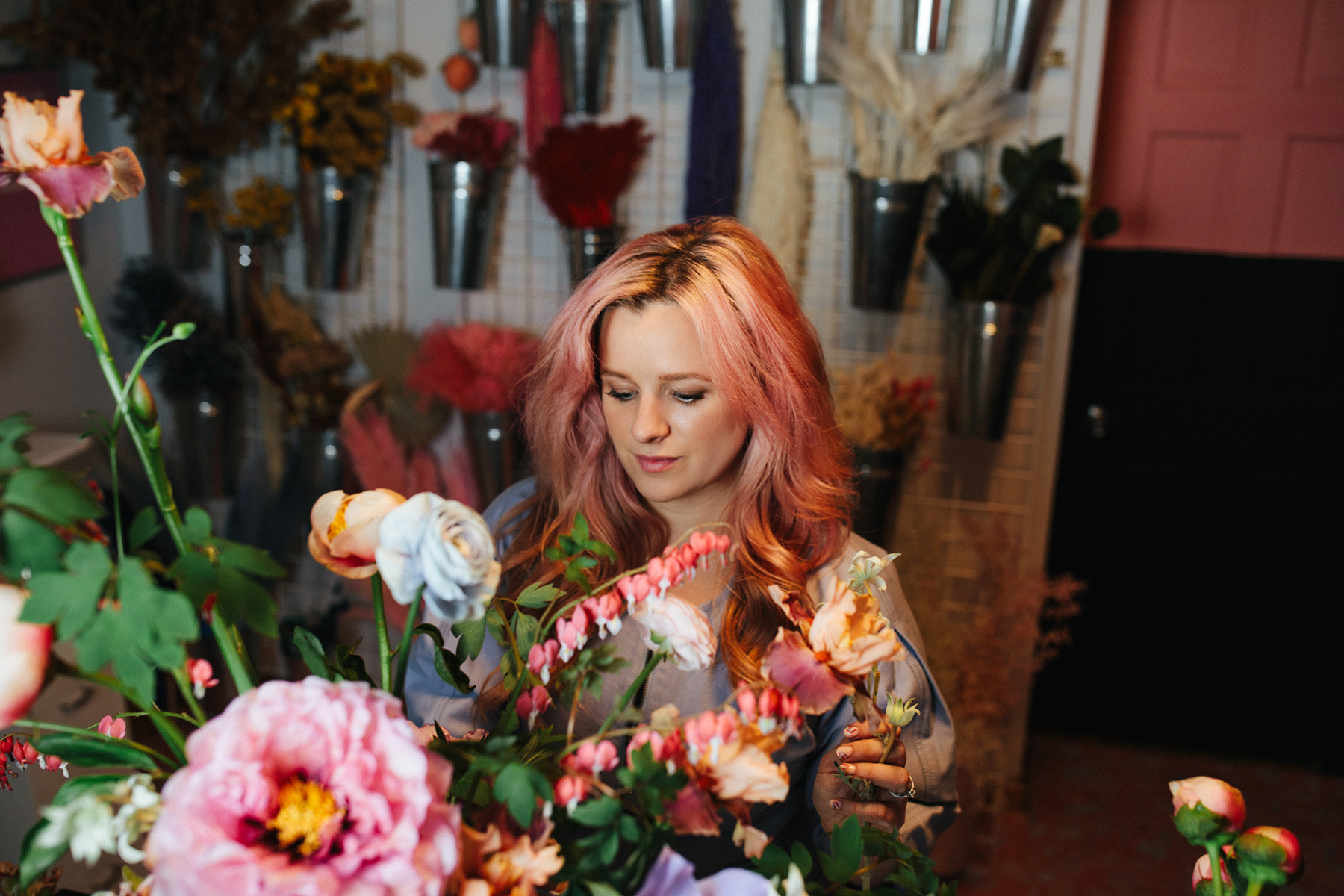
Whitney: What led you to start working with flowers?
Kelsea: It’s funny, I don’t consider myself a designer or an artist; I’m not used to calling myself “creative.” I was working for the BHLDN visual team at Anthropologie NYC after 10 years in the music industry when I started incorporating florals in merchandising. My manager saw something in my ability, and tasked me with doing all of the seasonal flips in the city. I’m so grateful to Anthropologie for teaching me things like the “rule of threes” and letting me cut my teeth on unexpected color stories through fashion storytelling — especially in New York, where people have the best street style. That’s definitely where I fell in love with flowers as a creative medium.
So you were essentially self-taught?
When I started East Olivia, my home-away-from-home was the NYC Flower Market. You learn by doing, so I dove right in to learn about all the different types of flowers and felt this magnetic, childlike wonder in finding things I’d never seen before. One of my favorite things to do is to have a color story in mind, develop a recipe and go source ingredients at the market.
As a sole proprietor, what is the most challenging part of your job?
I came from public relations, worked in artist and tour management, promoted shows, ran a small Indie label, DJed… the burnout was real. I wanted to be sure and set myself up to not have the same burnout. Managing people requires a lot of emotional capacity, but I’m committed to creating a positive company culture. You learn to soften past experiences when they come full circle: I can’t get a credit card in my name from having bad credit history, but I’m running a multi-million dollar business! Most days I have to run the business and I don’t always get to do the fun part (installations).
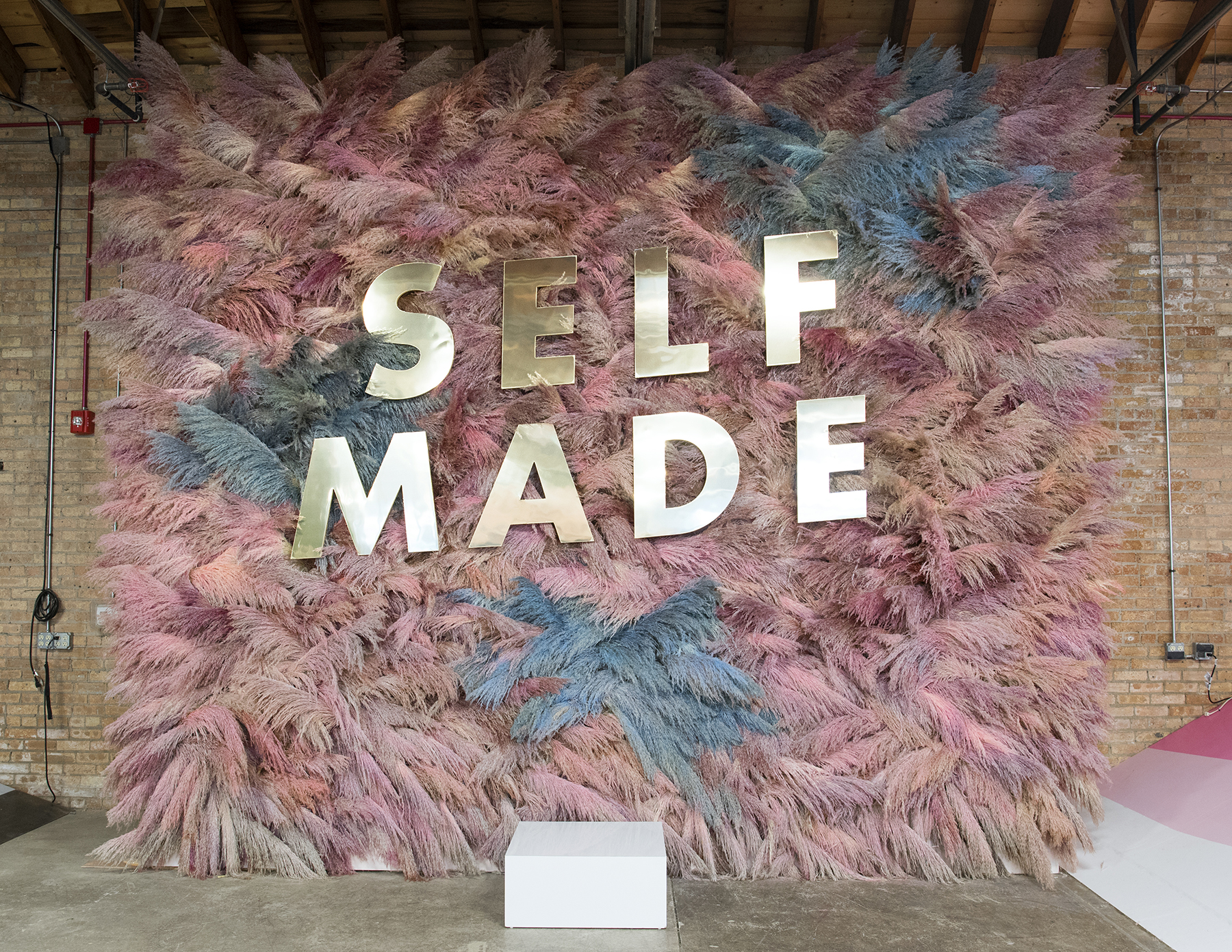
How do you overcome logistics and tight timelines working in NYC?
Floral [design and installation] is such a physically demanding career and logistics in a city like NYC are a nightmare. Being in NYC also presents seasonal sourcing issues — there is only so much you can source locally. We end up using products from Japan, Holland and South America, and I started keeping a really big inventory of dried and preserved ingredients to reuse and help offset our carbon footprint. Also, I’ve learned to control the controllables, get curious, and stay neutral — you can’t be angry and curious at the same time.
You mentioned reuse in your business model — how do you approach sustainability in your industry?
At my very first event, I was shocked by how much waste was produced. Our first priority was eliminating the use of floral foam, which is hard to dispose of and can take more than 100 years to break down. I had the advantage of being self-taught and never learned the structural advantages of foam because I was using alternative methods like reusable plastic tubes, compostable buckets and bowls, and chicken wire. We compost everything we possibly can, even though getting bins in NYC takes a lot of effort. Some articles have come out about preserving chemicals, and how using dyed or painted flowers isn’t “real” floral design. This bothers me because there are so many different ways to be an artist. We use chemical-free dyes and spray paints that are sugar based and less toxic — we’re always trying resourceful ways to be better. Sometimes I’m insecure around those who are super into sustainability, even though we all contribute to the negative impact in some way. Shaming doesn’t recognize the human value in each other, it makes people not want to learn. For the most part, the floral design community is amazing and really positive. Being environmentally responsible takes extra steps, but it’s worth it.
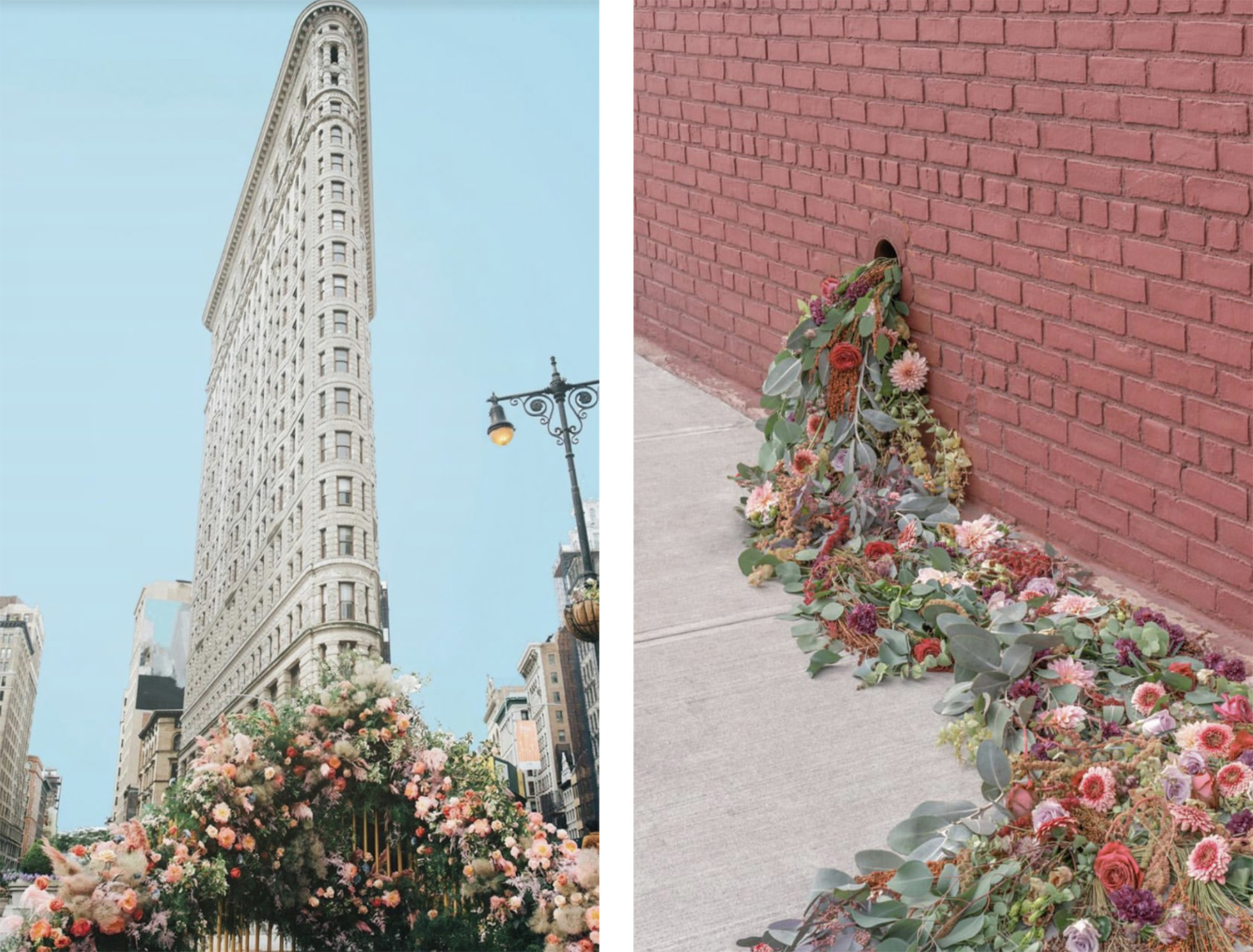
What is your favorite project you’ve put out in the world and why?
We averaged two-to-three projects per week in 2019, and even though I talk about this a lot, the installation in front of the Flatiron Building in NYC is still my favorite. We had to build a super-sturdy structure but couldn’t find a sponsor to build it, so that was an unplanned investment that turned into a rental piece. There were so many ingredients involved that most people don’t know exist, like smoke bush and hand-dyed pampas grass. We pulled an all-nighter in the pouring rain to get it ready by 6 a.m. It was the first time my work was in front of the public, and it was so rewarding to see strangers interact with and admire our work.
And your dream project?
This is so cheesy, but to do an installation or collaboration with my favorite artist, The National. Working in the music industry for 10 years made me appreciate pop music. Bon Iver or Taylor Swift would also be really great too, getting to meld my two worlds and work together with an artist versus getting hired to execute something.
If you had to pick, what is your favorite flower?
I don’t know! It’s so hard — I learned to fall in love with flowers that I had previously written off. Carnations, roses and baby’s breath are the black sheep [of floral design], but are the most beautiful and fun to work with.
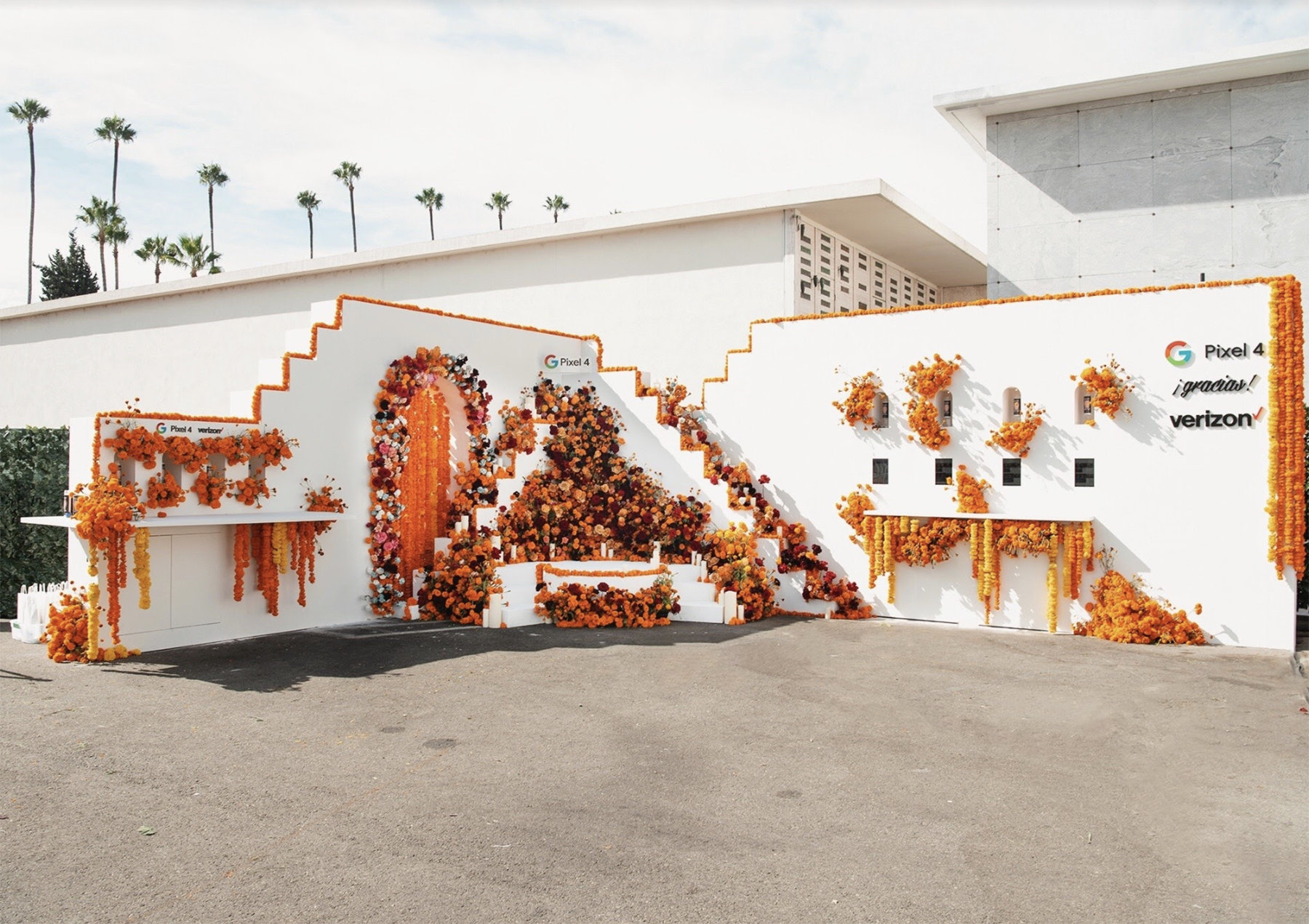
What advice do you have for all the entrepreneurs out there?
Hard work and humility. People can’t give you either, you have to be committed to them. If you’re not willing to ask what you don’t know, you’re never going to find out, so learn to ask a lot of questions — I believe I can do this, but I’m humble enough to ask for support. Find experts in your field who you respect and will give you their time. Work for free, travel to see new perspectives, and craft your own narrative and voice. And be kind! If we’re not nice or having fun, then it’s not worth it.
XX Whitney Connolly. Images courtesy of East Olivia.
Every other Tuesday we tap into our network of influential collaborators and talented contributors to get the inside scoop on essentials they can’t live without. Sign up in the black box below to get our bimonthly Creative Directory newsletter, curated by RANGE Mag. We’re Creative Connectors™.
